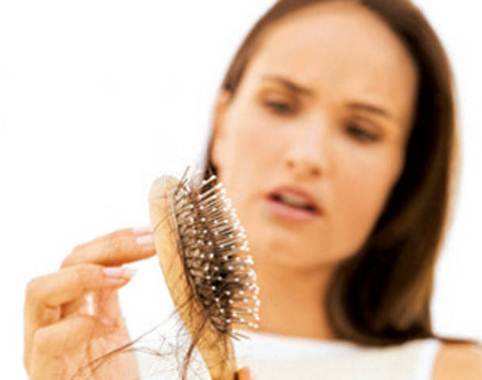Stronger Medicine

If the hair loss is more extensive, the
next possibility is a series of treatments with a different type of topical
medication. “We use a product called DPCP, which is usually applied in a
hospital setting,” Landells explains. These treatments usually take place on a
weekly basis, starting with a very low concentration of the chemical and
gradually building up to a stronger solution. This sensitizes the patient’s
skin to the DPCP and essentially produces a low-grade allergic reaction.
“We keep increasing the concentration
until we get a bit of a red, itchy rash,” Landells says. The process takes
roughly three months or so. “That’s felt to be almost a diversional tactic: it
causes inflammation in the skin, to recruit the immune cells, and move them
away from the hair follicle, which allows the hair to grow back. That can work
in up to 50 per cent of people with persistent alopecia areata.”
Some people develop swollen lymph nodes
as a result of the constant immune system stimulation, but this isn’t harmful.
Much more rarely, DPCP and its ilk can cause either a very intense allergic
reaction or rashes elsewhere on the body. “That’s very unusual in 18 years,
I’ve seen two or three people who had to stop treatment for those reasons,”
Landells says.
Like corticosteroid injections, DPCP
treatments are covered by most provincial health plans.
Occasionally, oral immunes up pressing
medications the same type prescribed to prevent organ rejection following a
transplant are considered. “We rarely, if ever, use anti-rejection drugs due to
the possible adverse side-effects,” Landells says. Donovan, on the other hand,
says a small number of patients do opt for anti-rejection drug after carefully
weighing the risks. While these are admittedly uncommon in healthy patients,
they can include serious illness resulting from decreased ability to fight off
infections. Costs, which aren’t covered by provincial health plans, and
side-effect profiles vary according to the specific drug. And since this
treatment method hasn’t been extensively studied, it’s difficult to say just
how effective it is.
“It Doesn’t Define
Me”

Overall, “the vast majority of people
with alopecia areata do very well and regrow their hair,” Wiseman says. “Only
about five to six per cent of people with alopecia areata will go on to develop
long-term problems with hair loss, and sometimes, total baldness.” (Complete
loss of scalp hair is called alopecia totalis; loss of all body hair, which is even
more uncommon, is known as alopecia universalis.) Early age of onset, a family
history of alopecia areata, and a personal history of eczema are factors that
seem to increase the risk.
Initially, Debbie Pond chose to have
corticosteroid injections, which worked well. But after about a year, she
decided to stop, finding the repeated visits to the doctor too time consuming.
After weighing the alternatives, she chose to forgo those, too. Within four
months, she had lost all of the hair on her scalp, and her eyebrows and lashes.
“Emotionally, it was quite devastating,”
she admits, and to make matters worse, her marriage broke up around the same
time. “It took me a couple of years to really work through the emotions.”
Counselling helped, as did time. “People have to know that they’re going to go
through all the different stages of grief you have to get through them.”
With that process now more than 25 years
behind her, Pond counts her condition as something of a blessing. Earlier in
her policing career, more than one suspect stopped in his tracs when Pond’s wig
flew off, she jokes, and she’s been able to offer a uniquely empathetic ear and
lots of practical advice to friends coping with chemotherapy induced hair loss.
A font of knowledge on where to find
high quality hairpieces to other must haves like light cotton caps that soak up
the sweat that wells up under a wig, Pond is also on the board of the Canadian
Alopecia Areata Foundation, which provides information and support to people
with the disease.
“Alopecia areata is part of who I am,”
Ponds says, “but it doesn’t define me as a person. I’ve done everything in my
life I’ve wanted to do.”